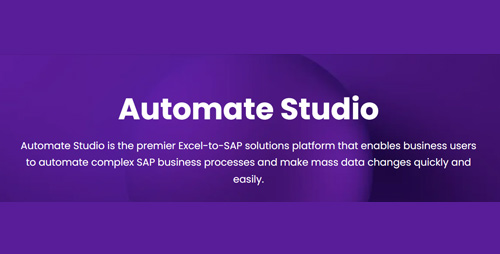The 2027 SAP Migration Crisis & Why Traditional Approaches Are Failing When Every Record Matters
The clock is ticking. In less than three years, SAP will end support for ECC systems, forcing one of the largest enterprise software migrations in history. With 50% of organisations already migrated to S/4HANA and another 30% scrambling to move within the next two years, we’re witnessing unprecedented urgency in the enterprise software landscape. But here’s the sobering reality: traditional migration approaches are failing when precision matters most.
The Migration Imperative
2027 marks the end of SAP ECC support
25-30% cost increase annually for organisations delaying migration
$30.7B migration market explosion from $10.55B in 2025
When a Tier 1 European financial institution faced this exact challenge: migrating 12+ billion transaction records from legacy SQL to Snowflake under MiFID II regulations, the stakes couldn’t have been higher. Zero tolerance for data loss or corruption meant that traditional “good enough” migration approaches simply wouldn’t suffice. The outcome of this project offers crucial insights for organisations still facing their own migration imperatives.
The Hidden Crisis: Why SAP Migrations Are Different
The SAP migration wave represents more than a typical system upgrade. Unlike standard data migrations, SAP transformations involve:
- Complex Business Logic: Years of customisations and business rules embedded in legacy systems that must be perfectly preserved
- Regulatory Compliance: Financial services, healthcare, and manufacturing face strict audit requirements where data integrity isn’t optional
- Operational Continuity: Mission-critical systems that can’t afford downtime or data discrepancies
- Integration Complexity: Interconnected systems where a single mapping error can cascade across the entire enterprise
The Scale Challenge
58% of organisations now use automation for SAP migrations
28% annual growth rate for AI-driven migration tools
Yet most still rely on basic row-count validation
Where Traditional Migration Approaches Fall Short
The financial institution’s challenge illustrates why conventional migration methods are inadequate for today’s requirements:
- Row Count Validation: Traditional approaches verify that the same number of records moved from source to target, but provide no insight into whether the data inside those records remained accurate.
- Sample Testing: Checking a statistical sample of migrated records might work for non-critical data, but regulatory environments require 100% validation.
- Post-Migration Reconciliation: Discovering data quality issues after systems go live creates expensive remediation cycles and potential compliance violations.
- Manual Quality Assurance: Human verification processes don’t scale to billion-record datasets and introduce their own error rates.
- Basic ETL Tools: Standard extraction, transformation, and loading tools lack the sophisticated validation capabilities required for precision migrations.
Precision at Scale: The New Standard
12+ billion transaction records migrated with zero tolerance for error
100% attribute-level validation across 5 years of financial history
97.5% matching accuracy proven in high-stakes regulatory scenarios
The Regulatory Reality: When “Close Enough” Isn’t Enough
Financial services organisations operating under regulations like MiFID II face a stark reality: every timestamp, every trade ID, every counterparty name must maintain complete accuracy through migration. A single discrepancy can trigger regulatory investigations, compliance violations, and reputational damage.
This precision requirement extends beyond financial services. Healthcare organisations migrating patient data, manufacturing companies preserving quality control records, and any enterprise handling personal data under GDPR face similar imperatives for migration accuracy.
The Technology Stack for Precision Migration
Meeting these challenges requires more than upgrading tools: it demands a fundamentally different approach to migration assurance. The solution lies in combining specialised technologies that address different aspects of the migration challenge:
Before any migration begins, organisations need comprehensive understanding of their data landscape. SingleView, Calimere Point's proprietary client data intelligence platform, addresses the complexity of fragmented, inconsistent data.

For comprehensive data validation during migration, Data360 Analyze provides the technical foundation for precision assurance.

Complex migrations require intelligent coordination of multiple systems, processes, and validation workflows.
1: Client Data Intelligence: SingleView
- Advanced Data Splicing: Proprietary techniques that process fragmented data strings and extract essential components regardless of format inconsistencies
- Multi-Layered Matching: Sequential protocols using exact match, clean name matching, partial matching, and fuzzy logic to achieve 97.5% accuracy
- Global Reference Validation: Integration with databases covering 250+ administrative regions to correct common errors and standardize formats
- Regulatory Compliance Integration: Built-in KYC and AML capabilities that ensure client data meets compliance requirements throughout migration
SingleView’s battle-tested performance, including the Panama Papers investigation where it certified 1.5 million accounts across 250,000 entities in just six weeks, demonstrates the precision required for high-stakes data challenges.
2: Data Validation and Transformation: Data360 Analyze
- Visual Workflow Design: Script-free nodes enable complex validation logic without traditional programming, making sophisticated business rules accessible to domain experts
- Multi-Source Integration: Native connectivity to databases, cloud platforms, and web services enables seamless validation across heterogeneous environments
- Real-Time Processing: Validation occurs during transformation rather than after deployment, enabling immediate error correction
- Collaborative Governance: Shareable data flows and validation templates ensure consistency across migration phases while enabling business user participation
3: Process Orchestration and Automation: Automate Studio
- Server-Based Execution: Tasks run on centralised servers rather than individual workstations, ensuring consistent performance and reliability
- Automated Scheduling: Migration workflows execute on predetermined schedules with intelligent retry logic for handling temporary issues
- Governance and Audit: Complete audit trails of all process execution, approvals, and escalations required for regulatory compliance
- Error Handling and Escalation: Automated routing of exceptions to appropriate teams with defined escalation procedures
The Competitive Advantage
$4.5B → $46.5B: AI in ERP market growth (2023-2033)
Organisations combining client intelligence, validation, and automation gain measurable advantages.
The Integrated Approach: Precision Through Orchestration
The most successful migrations combine these technologies into integrated workflows that address every aspect of data movement and validation:
SingleView analyses existing client data to identify inconsistencies, duplications, and compliance gaps while Data360 Analyze profiles technical data structures and quality metrics.
Business rules identified through SingleView analysis are implemented as validation workflows in Data360 Analyze, with Automate Studio coordinating testing and approval processes.
Real-time validation through Data360 Analyze ensures data quality while Automate Studio manages the sequencing of migration phases and coordinates rollback procedures if issues arise.
Automated audit trail generation combines client data validation results from SingleView with technical validation metrics from Data360 Analyze, orchestrated through Automate Studio's governance capabilities.
Lessons from the Frontlines: What Success Looks Like
The 12+ billion record migration demonstrated several critical success factors:
- Comprehensive Validation: Every record, every field was examined rather than relying on statistical sampling or basic reconciliation.
- Real-Time Error Detection: Issues were identified and corrected during transformation rather than discovered after go-live.
- Regulatory Readiness: Complete audit trails and validation documentation satisfied MiFID II requirements from day one.
- Operational Continuity: Phased validation approach minimized business disruption while ensuring data integrity
The measurable outcomes included:
- Full confidence in migrated dataset integrity
- Months of QA time eliminated through automation
- Smooth cutover with minimal business disruption
- Future-ready platform enabling advanced analytics and AI initiatives
The Window is Closing
2027 deadline creates bottleneck in expert resources
Early movers secure better implementation timelines and expertise
Delayed decisions face rushed implementations and higher costs
The Strategic Imperative: Acting Before the Rush
Organisations still planning their SAP migrations face a narrowing window for strategic implementation. As the 2027 deadline approaches:
- Resource Constraints: Expert migration teams and specialized tooling become increasingly scarce
- Implementation Quality: Rushed migrations increase the likelihood of data quality issues and compliance failures
- Cost Escalation: Delayed projects face premium pricing for expedited implementation
- Competitive Disadvantage: Organisations completing migrations early gain operational advantages while competitors struggle with legacy constraints
The Path Forward: Precision as Competitive Advantage
The convergence of regulatory pressure, migration deadlines, and digital transformation opportunities creates unprecedented demand for migration approaches that deliver both speed and precision. Organisations that master this combination gain:
Regulatory Confidence: Comprehensive validation and audit capabilities that satisfy the most stringent compliance requirements
Operational Excellence: Automated workflows that eliminate manual error sources while maintaining transparency
Strategic Agility: Clean, validated data that enables AI-driven analytics and automated business processes
Competitive Positioning: Faster time-to-value from new SAP capabilities while competitors navigate migration challenges
For organisations still planning their migration journey, the window for strategic implementation is narrowing.
The 2027 SAP migration deadline isn’t just a technical milestone, it’s a strategic inflection point that will define competitive positioning for the next decade. Organisations that approach this challenge with precision-engineered migration strategies will emerge with stronger operational capabilities, better compliance postures, and enhanced competitive advantages.
The question isn’t whether to migrate, but how to migrate with the precision and assurance that regulatory environments demand. The integrated approach combining client data intelligence, comprehensive validation, and intelligent automation represents more than best practice: it’s the foundation for turning compliance requirements into competitive advantages.
The tools, methodologies, and expertise exist to execute migrations with mathematical precision, but only for those who act decisively. The future belongs to organisations that can move their data with complete confidence. The question is whether your organisation will be among them.
Move with Precision. Lead the Future.
After delivering successful, precision SAP migrations, we can help you do the same. Read our Use Case here.
Speak to our team, and migrate with confidence, or risk falling behind.




